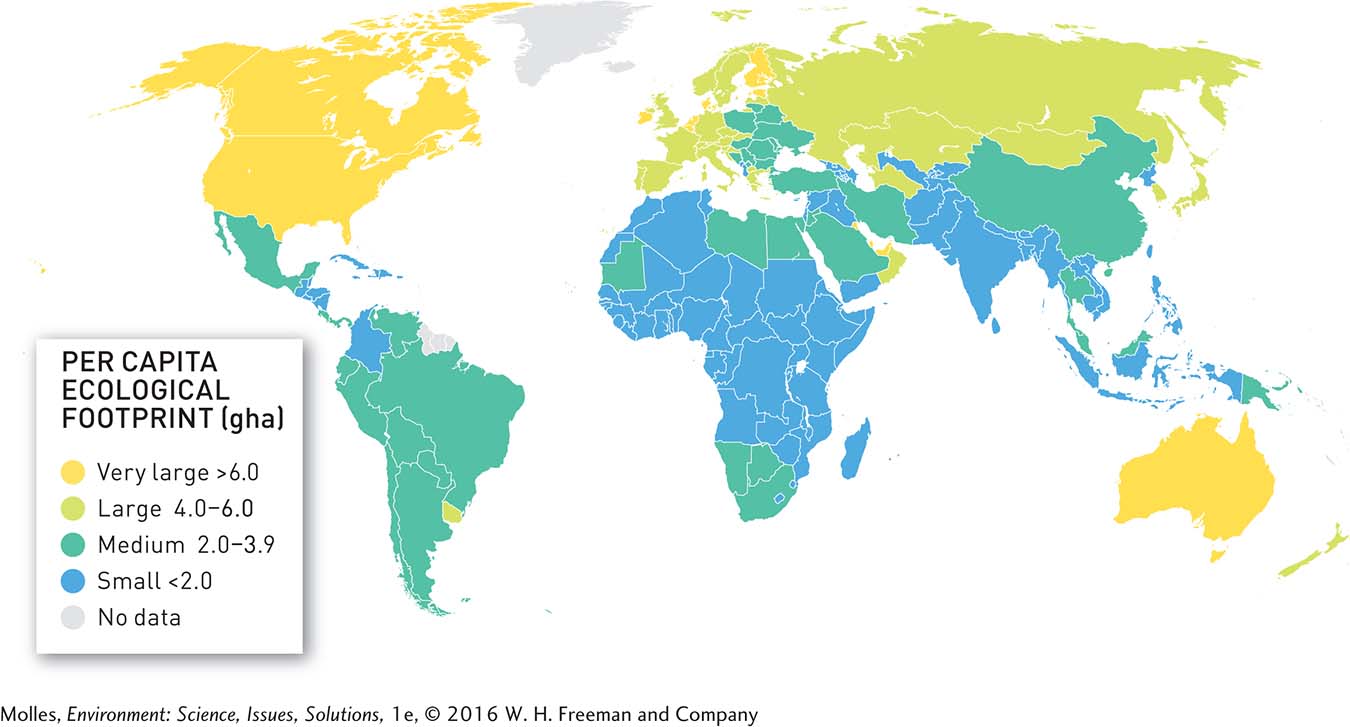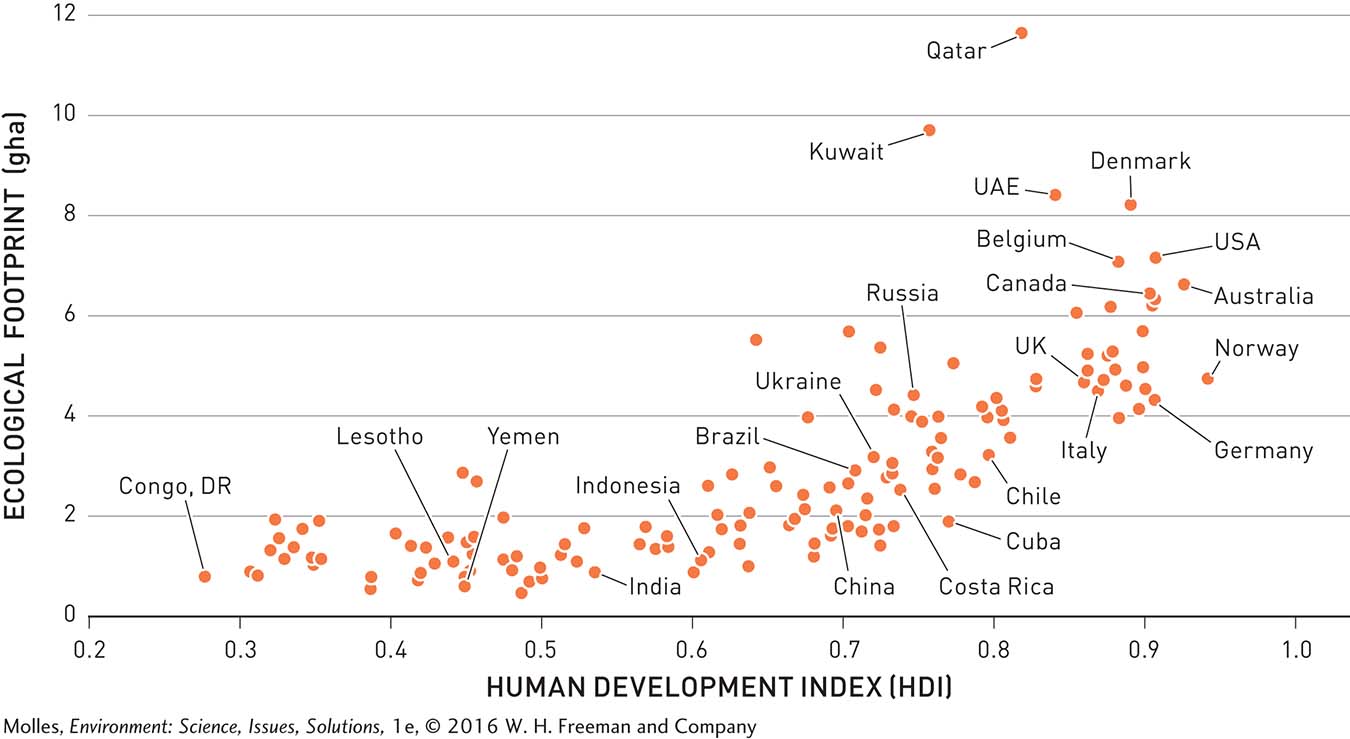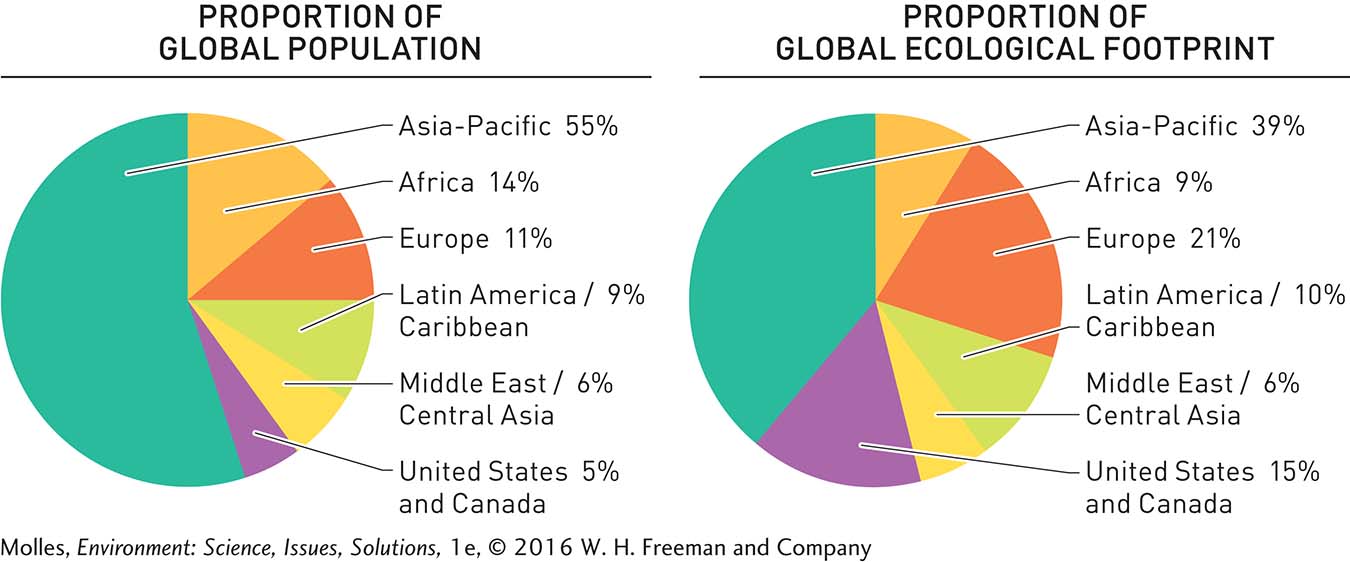5.6 Population growth and development generally increase environmental impact
In 1971 ecologists Paul Ehrlich and John Holdren made one of the first attempts to quantify the impact of human populations on the environment. They recognized that a population’s environmental impact is not simply a matter of the number of people in the population. It’s also important to consider how affluent the population is and measure that affluence in terms of per capita resource consumption and waste production. Generally, the average level of resource consumption increases with rising levels of affluence.

How might technological developments reduce the environmental impacts of populations?
In addition, one needs to factor in technology used in production of, for instance, consumer goods, because some technologies consume more energy and produce more waste than others. Ehrlich and Holdren recognized that some technologies, such as more fuel-
I = P × A × T, where:
I = impact on environment (loss of resources, degradation of ecosystems)
P = population (total number in population)
A = affluence (a shorthand for per capita resource consumption)
T = technology (processes and products that require energy and resources)
One of the main conclusions we can draw from the IPAT equation is that individuals in less affluent countries, such as those of sub-
The Ecological Footprint and Development
The IPAT equation was, in many ways, a precursor to the ecological footprint, which we introduced in Chapter 1; it is an estimate of the area of land and water required for a human population to provide the natural resources it uses (see page 20). You may notice that as a country’s development level increases, its per capita ecological footprint also tends to increase (Figure 5.12 and Figure 5.13). That’s not always true, and while development in many countries has been bought at a very high environmental cost, some rich countries have achieved high levels of development with lower impacts.


The total impact of a population on the environment can be estimated by multiplying the number of people by their per capita ecological footprint. Figure 5.14 shows the relative population sizes in the world’s major regions, along with their total ecological footprints. One of the clearest conclusions we can draw from this comparison is that, relative to their sizes, the populations of North America—


Which world region shown in Figure 5.14 has the largest per capita ecological footprint? Which has the smallest?
Think About It
Using Figure 5.13, compare the relative ecological footprints of an individual in the United States and an individual in China.
Using the estimates you determined above, compare the total ecological footprints of the two countries. (Note: In 2012 the population of China was 1,343,000,000 and that of the United States was 314,000,000.)
How does your own ecological footprint compare with that of other individuals living around the world? (See the ecological footprint calculator at www.footprintnetwork.org.)